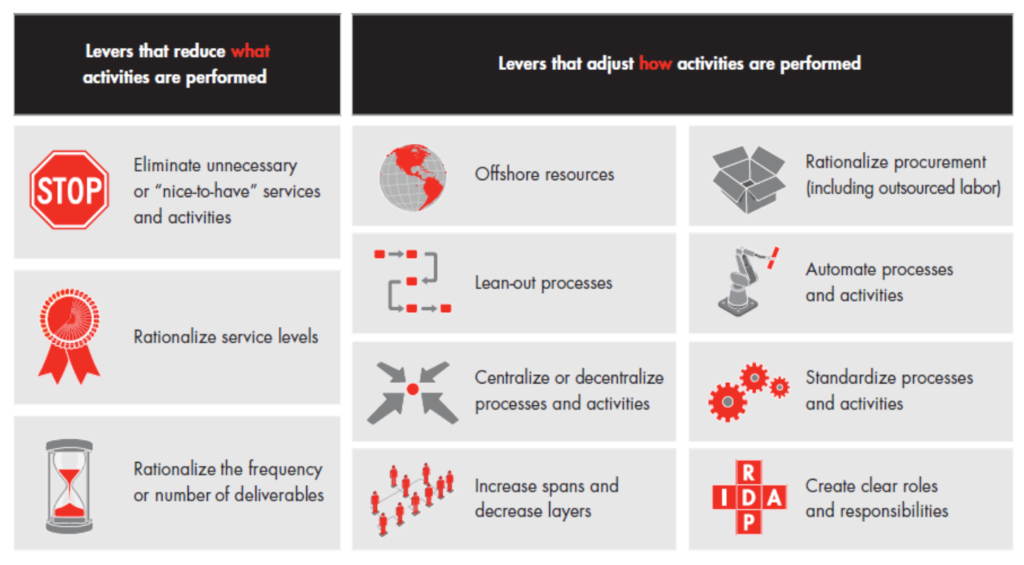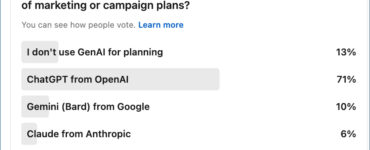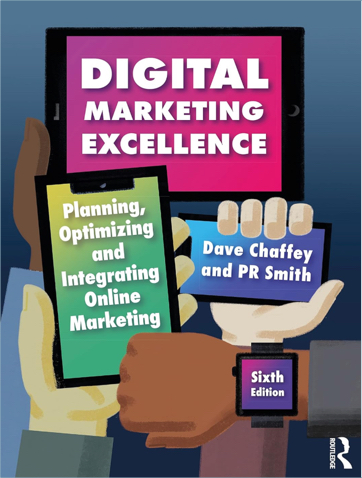In their article Zero-based productivity—Marketing: Measure, allocate, and invest marketing dollars more effectively, McKinsey explains the rational for Zero-based budgeting as follows:
Zero-based marketing—a comprehensive approach that extends zero-based budgeting principles to marketing categories across the enterprise—can uncover opportunities for savings worth 10 to 25 percent of spending in certain categories, and these funds can be reallocated to higher-value areas. In fact, with the rare exception of industries that are in a global state of decline, a well-executed reinvestment in high-ROI opportunities will deliver a greater return than “banking the savings” will.
This visual from consultants Bain usefully shows how ZBB focuses on improvements using both ‘what’ and ‘how’ savings. They point out that the aim should be to reduce cost, but at the same time avoid inhibiting growth. Here is their summary of the different parts of the ZBB technique.

However, as Deloitte point out in The Wall Street Journal feature CMO Insights and Analysis from Deloitte, using ZBB as a pure cost-cutting exercise is missing out on the value of ZBB. Ed Johnson, principal in the consumer business practice at Deloitte Consulting LLP explains:
“Commercial spending, which includes costs associated with advertising, trade promotions, and discounting, makes an excellent candidate for digital ZBB because it is sizable, measurable, and fragmented. For those willing to take it on, digital ZBB can offer a simpler, more repeatable way to manage this expense.”
They explain that a raft of new tools—for trade promotion optimization, planning, portfolio price optimization, marketing mix modeling, and programmatic advertising analytics—has enabled more detailed calculation of ROI for the consumer-facing components of commercial spending.
Unilever brands are an examples of consumer brands successfully applying ZBB. In a recent financial report they say: Zero based budgeting (ZBB) is improving our productivity in brand and marketing investment as we reduce the cost of advertising production and increase investment in media channels. ZBB is also eliminating waste in those areas where we have over-saturated traditional media channels, as well as reducing overheads[2]. They introduced this programme by test and learn in different markets. Unilever piloted zero-based budgeting for one year in Thailand, for instance, which reduced its overall spending by 2% as a share of sales.
[1] The Wall Street Journal. CMO Insights and Analysis from Deloitte
With Digital Tools, Zero-Based Budgeting Lifts Marketing ROI
[2] Good all-round performance with accelerated value creation
Contrast this with the approach where traditionally, businesses have used ‘rules of thumb’ to set budgets, for example:
- The “ten percent” rule. Where a marketing budget is around 10% of a firm’s revenue.
- Last year’s budget, adjusted by growth in company revenue. This is a more traditional way for budgeting across functions and industries; if you made do with last year’s resources, you get about the same amount this year.
Assessing content marketing spend is a particular challenge given the increasing spend on content and creation needed to compete, along with the difficulty of gaining cut-through. Victor Gamez of Percolate explains one technique to tackle this where you think of your spend on campaigns and content as being spent two ways:
- Working Spend: The amount of money you spend on distribution, or what it costs to place a piece of content in front of your audience.
- Non-working spend: The amount of money you spend producing the content, and preparing it for distribution. Part of this is accounted for when you’re determining how much you’ll spend on your team (see the above question), but other expenses accrue outside that context—photoshoots, image procurement, and agency fees can all add up.
He explains that every dollar you spend on non-working spend keeps you from distributing impressions and content to more people.






